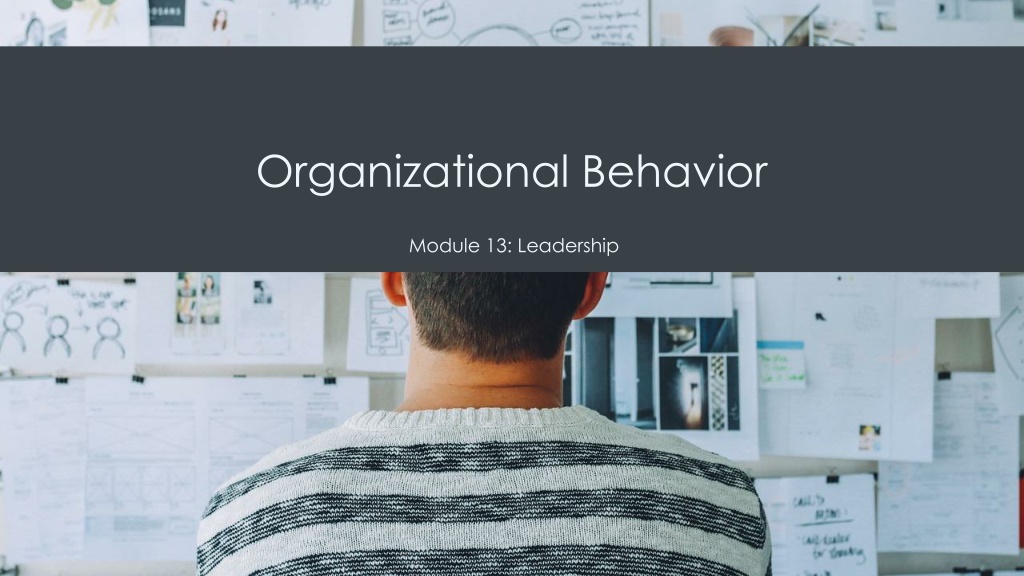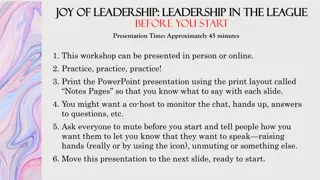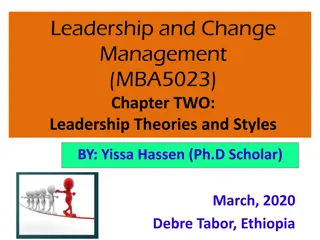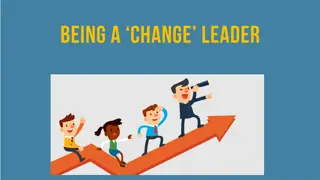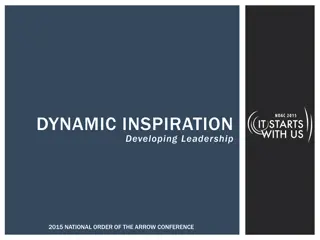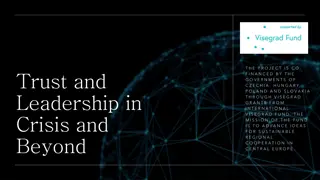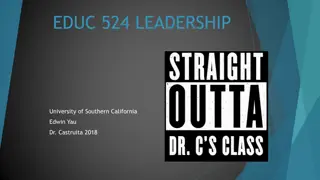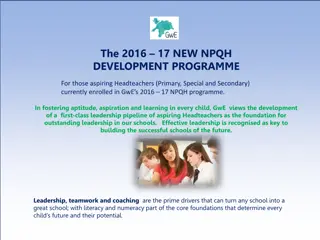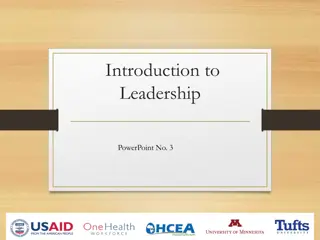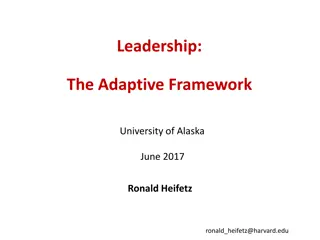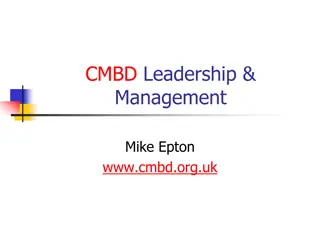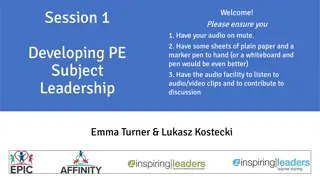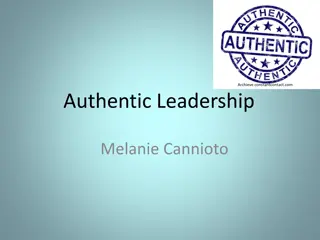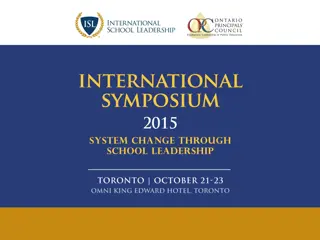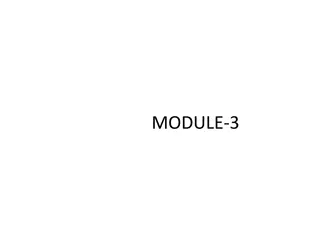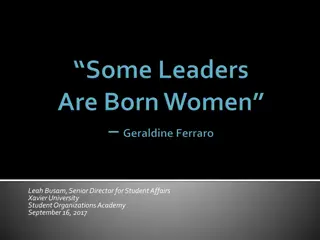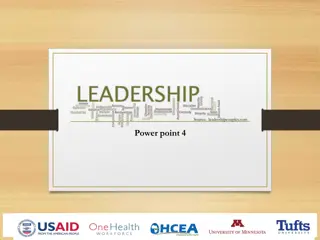Understanding Leadership: A Comprehensive Overview
Explore the realm of leadership in organizational behavior through topics like recognizing good and poor leadership, the history of leadership theories, and the distinction between leadership and management. Dive into the evolution of leadership approaches, from early trait theories to behavioral and contingency models. Engage in discussions about favorite leaders to dissect qualities and behaviors that contribute to effective leadership.
Download Presentation

Please find below an Image/Link to download the presentation.
The content on the website is provided AS IS for your information and personal use only. It may not be sold, licensed, or shared on other websites without obtaining consent from the author. Download presentation by click this link. If you encounter any issues during the download, it is possible that the publisher has removed the file from their server.
E N D
Presentation Transcript
Organizational Behavior Module 13: Leadership
Module Learning Outcomes Recognize good and poor leadership and the varieties of leadership 13.1: Describe the history of leadership as a topic inside organizational behavior 13.2: Discuss the pros and cons of leadership styles and topics 13.3: Describe the history, context and utility of the distinction between leadership and management
Learning Outcomes: The History of Leadership Theories 13.1: Describe the history of leadership as a topic inside organizational behavior 13.1.1: Discuss our understanding of leadership from the historical perspective 13.1.2: Describe the early trait approach 13.1.3: Describe the behavioral approach 13.1.4: Describe the contingency approach and its variations
Leadership is a group phenomenon using influence goal directed assumes hierarchy
History of Leadership Born, not made Divinely chosen
Class Discussion: Your Favorite Leader (part 1) Get into groups of three or four people, and discuss a favorite past leader. Yours could be a coach, a teacher, or a former manager. Each member of the group should pick his or her own leader. The group should discuss personality traits that make a leader successful. Does your favorite leader have any of those personality traits? Write down four or five qualities your favorite leader exhibited.
Early Trait Theories Galton s eminent men and hereditary theories Cowley s complex group of leadership traits Zaccaro s Individual differences can still predict leadership effectiveness Ultimately Traits can predict leadership. Traits do a better job of predicting the emergence of leaders and the appearance of leadership than they do distinguishing between effective and ineffective leadership.
Class Discussion: Your Favorite Leader (part 2) Now we understand that qualities alone do not make a leader effective. A person can possess leadership qualities and still not be an effective leader. So let s take a look at behavior! Get back together in your group and discuss how your favorite leaders behaved. Look at two things: The leader s behavior with people (e.g. motivating, caring about them, helping them be productive, etc.) The leader s behavior around accomplishing the goal Write down these behaviors and prepare to discuss
Behavioral Approach The Ohio State Studies The University of Michigan Studies Blake s and Mouton s Managerial Grid The Scandinavian Studies Ultimately Behavioral theories had modest success in identifying consistent relationships between leadership behavior and group performance. None of these consider situation as a factor.
Contingency Theories of Leadership Contingency theory states that leadership is a combination of traits, behaviors and situations Fiedler Contingency Model Cognitive Resource Theory Hersey and Blanchard s Situational Theory Leader-Member Exchange Theory Path-Goal Theory Leader Participation Model
Class Discussion: Your Favorite Leader (part 3) Now we re starting to get a full picture of how a leader is effective. We know that Fiedler s Contingency Theory isn t perfect, but let s use it as a measuring tool for your favorite leader anyway! Get back into groups and discuss your favorite leader, and how s/he might rank in terms of Leader/member relations (good/poor) Task structure (high/low) Leader power orientation (strong/weak) Discuss your ratings in your group and why you each chose those ratings for your favorite leader. Use examples from your experiences with your leader. Decide where your favorite leader falls on Fiedler s chart.
Practice Question 1 In the late 1920s, W.H. Cowley proposed that ________________. A. that any study of leadership of value should produce a list of traits which go together to make a leader. B. that eminent relatives dropped off in the second and third degree relatives, providing evidence that abilities are inherited. C. that individual differences can predict leader effectiveness. D. that leadership exists between persons in a social situation, and persons who are leaders in one situation may not be a leader in another
Learning Outcomes: Leadership Styles and Topics 13.2: Discuss the pros and cons of leadership styles and topics 13.2.1: Identify leadership styles 13.2.2: Understanding trust as an element of successful leadership 13.2.3: Identify contemporary leadership roles 13.2.4: Discuss common issues leaders must face 13.2.5: Identify challenges to the concept of leadership
Kurt Lewin and Leadership Traits Developed three distinct leadership styles after observing children completing a craft project: Authoritarian (autocratic) Participative (democratic) Delegative (laissez-faire)
Other leadership styles Transactional Charismatic Transformational Servant
Trust in leadership Deterrence-based Knowledge-based Identification-base
Leadership Roles Providing team leadership Mentoring
Leadership Issues Technology and changing roles Industry disruption Distributed workforces
Challenges to leadership Leadership Attribution Bias Substitutions and Neutralizers
Practice Question 2 Which leadership style is characterized by a set of activities that involve exchanges between leaders and followers concerning daily tasks? A. Charismatic B. Delegative C. Transactional D. Servant
Practice Question 3 What is a characteristic of identity-based trust? A. The potentially harmed party must be willing to introduce harm in return if trust is violated B. An individual can predict behavior based on past interaction. C. The trust is based on an emotional connection between the two parties D. Trust is masked by the growth of the company
Learning Outcomes: Leadership vs Management 13.3: Describe the history, context and utility of the distinction between leadership and management 13.3.1: Analyze the difference between leaders and managers 13.3.2: Discuss the hybrid role of leader-managers in contemporary organizations
Leader vs Manager: Abraham Zaleznik Leader Inspiration Vision Human passion Manager Order Control Rapid solutions
Leader vs Manager: John Kotter Leader Inspiration Vision Human passion Leader/Manager Leadership focused on change Management focused on complexity Not necessarily two separate people Manager Order Control Rapid solutions
Roles of leaders and managers Create momentum around your vision and the company s vision Set examples and explain your reasoning to earn employee respect Accomplish goals Innovate new solutions
Practice Question 4 Establishing a vision for teams, encouraging leaders of sub-departments, and innovating changes are all the duties of: A. the leader of the company B. the manager of the department C. the leader/manager hybrid D. all the employees of the company
Quick Review Many theories of leadership have developed over the years Trait theories Behavioral theories Contingency theories but probably not divinely chosen! Every leader has a style, whether it s charismatic or authoritarian Trust is intrinsic in leadership Leaders must overcome obstacles like adjusting to new technology or managing dispersed workforces There are some schools of thought that suggest leaders aren t needed There is a difference between a leader and manager, and today s business climate tends to demand a leader/manager hybrid.
